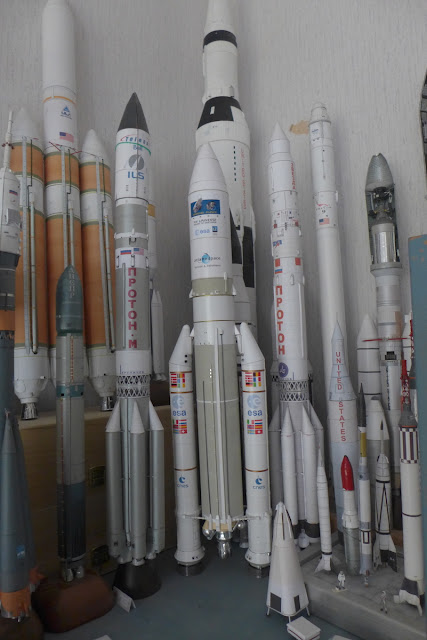 |
| Getting quite busy on the rocket shelf. |
Well, that was something, the past days. Hours of work and thinking down the drain. At least, for a great deal. The Ariane
is on the shelf now, together with its peers. But I am not happy with it. Everything below the fairing looks wonderful to me. It's precise, tightly fitting and unblemished. It looks very close to perfect to me. So a fairing with very visible seams and a bad fit is not the crown on this job. And this is a bad faring ogive. The parts of Mark Cable which are taking up the top part are great, but the transition between his top and the cylindrical part of the fairing sucks. I redid it five or six times but I couldn't get the measurements just right. I finally took the one that looked the least bad and used it in the ogive. But the cone is crooked. It is not elegantly curved. Grmbl.
 |
| Grmbl. |
It kept on lingering through my mind, while I was taking a walk through the park this afternoon with my girlfriend. It has to be done differently. It needs to be good looking. I haven't spent that much time on the rest of this build to leave it there with a messed-up fairing.
So I started thinking the unthinkable, at least, unthinkable for me.
[more after the jump]

